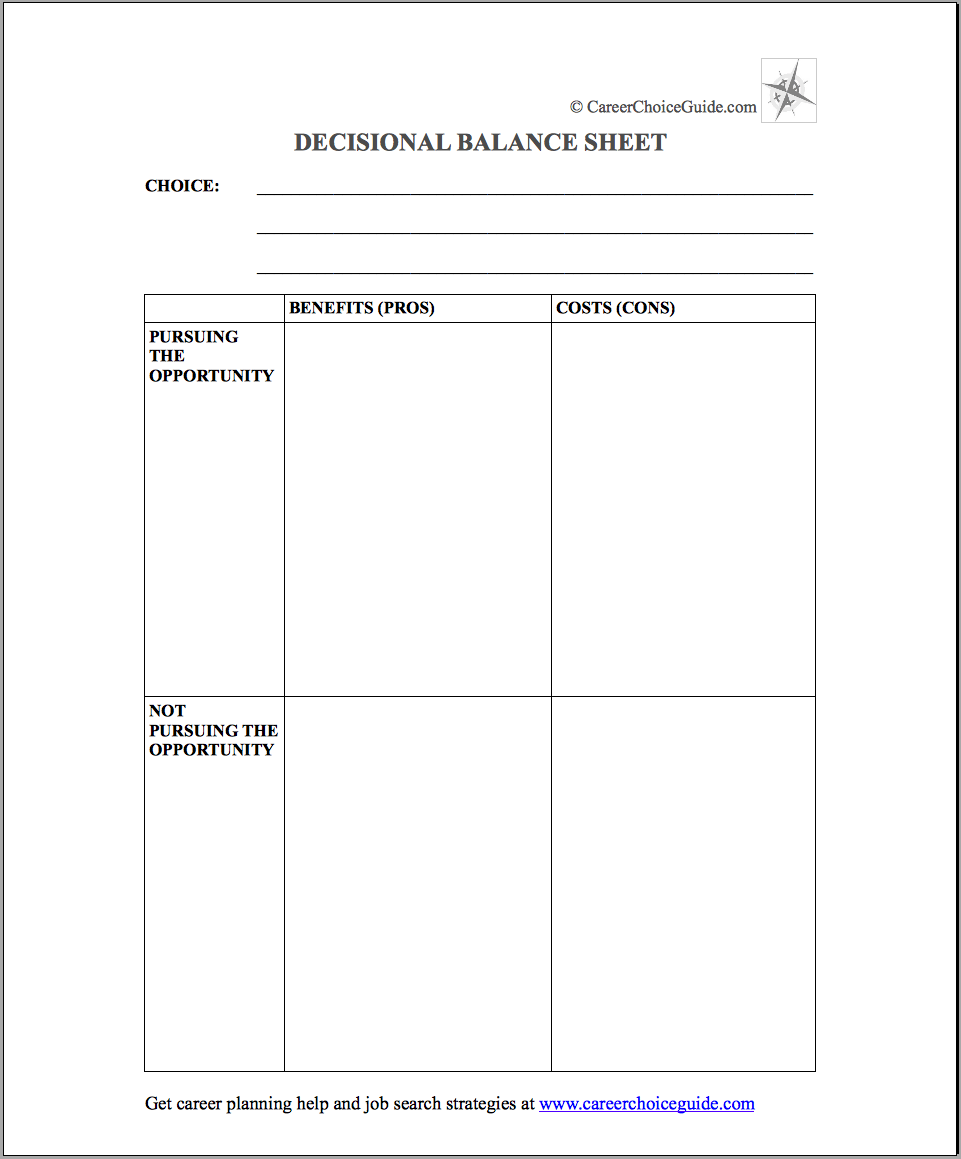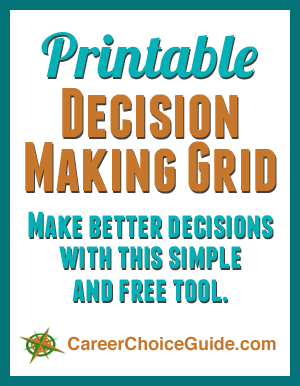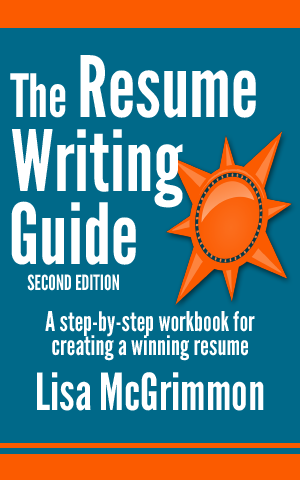Career Decision Test
Are you trying to make a work-related decision and feeling stuck? Try this simple, effective career decision test.
If you're the kind of person who likes to make pro and con lists to think through your options, you'll like using this decisional balance worksheet.
The decisional balance is like a pro and con list, only much more thorough. It is a helpful tool because it causes you to systematically consider all sides of a decision. Plus, it is free and easy to use. All you need is a piece of paper, a pen, and some time to think through the choice you need to make.
When you work through a decisional balance, you'll think through the benefits and costs of pursuing a specific choice, and you'll also think through the benefits and costs of not pursuing a specific choice.
That second part, where you think about not pursuing a choice, is what makes this tool superior to a simple pro and con list. With a pro and con list, you just think about the consequences of saying yes to an option that has presented itself. With a decisional balance, you also think about the consequences of saying no to that option, and that extra layer of thinking can provide a surprising amount of additional useful insight into a situation.
Download the Form
Download the Decisional Balance Form

You can download this form with instructions, or just grab a sheet of paper and divide it into four sections as you see in the image above.
It's easy to use this career decision test. Just follow these simple steps:
- Use the form provided, or create your own grid.
- Above the grid, write down the choice or decision you are trying to make. Example: Accept a new job offer.
- In the box at the top left corner, write down all of the benefits of choosing the option you are considering. Example: Write down all of the ways you'd benefit from accepting the new job.
- In the top right corner, write down all of the costs, or negatives connected with choosing the option. Example: Write down all of the negatives associated with accepting the new job.
- In the box at the bottom left, write down all of the benefits of not choosing the option in question. Example: Write down all of the benefits of not accepting the new job.
- In the box at the bottom right, write down all of the costs, or negatives connected with not choosing the option. Example: Write down all of the negative connected with not accepting the new job.
Putting all of those benefits and costs in writing in this way helps you to think through a choice from all angles and clarify your thinking. It can also make it easier to present your hopes and concerns to others who might be involved in making the decision.
If you keep your chart for future reference, it can be a useful tool to keep you motivated through the challenges that are related to accomplishing whatever goal or course of action you've chosen. If, for example, you decided to accept a new job, but now you're feeling a bit overwhelmed with your new responsibilities, you can refer back to the decisional balance that helped you choose to accept that job. It will remind you of all of the benefits of the new job, and everything you'd be missing out on if you hadn't accepted the job, and you can be reminded that those factors outweighed the reasons for not accepting the job.
The decisional balance is deceptively simple. It really doesn't look like much, but don't dismiss it. It really is a powerful tool. Download the form here, and get your thoughts organized to make your next big career decision!

